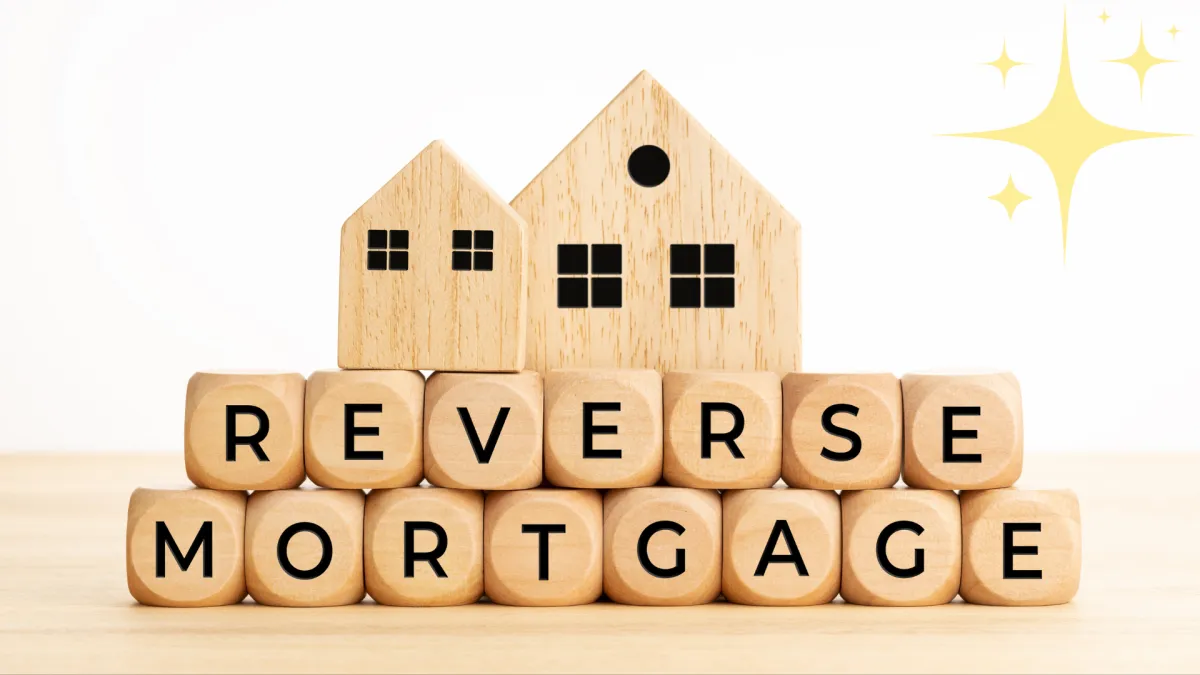
Fact Checked
Reverse Mortgages:
For Homeowners Age 62+
Our guidance draws upon our extensive expertise within the mortgage industry, and our unwavering commitment lies in assisting you in realizing your dreams through homeownership.
What is a Reverse Mortgage?
A reverse mortgage loan, like a traditional mortgage, allows homeowners to borrow money using their home as security for the loan. Also like a traditional mortgage, when you take out a reverse mortgage loan, the title to your home remains in your name. However, unlike a traditional mortgage, with a reverse mortgage loan, borrowers don’t make monthly mortgage payments. The loan is repaid when the borrower no longer lives in the home. Interest and fees are added to the loan balance each month and the balance grows.
How does a reverse mortgage get paid back?
With a reverse mortgage loan, the amount the homeowner owes to the lender goes up–not down–over time. This is because interest and fees are added to the loan balance each month. As your loan balance increases, your home equity decreases.
A reverse mortgage loan is not free money. It is a loan where borrowed moneym added fees and interest acrues monthly adding to the loan balance. The homeowners or their heirs will eventually have to pay back the loan, by either selling the home or refinancing the reverse mortgage debt to a new mortgage. Either way, the remaing equity transfers to your heirs in the same way it would with a conventional mortgage.
Understanding the Basic Requirements:
Age Requirement: At least one homeowner must be 62 years or older.
Primary Residency: The home on which you are taking a reverse mortgage must be your primary residence, meaning you should live there for the majority of the year.
Property Types: Eligible properties include single-family homes, owner-occupied 2-4-unit buildings, townhouses, approved condominiums, and certain types of manufactured homes that meet FHA requirements.
Mandatory Counseling Session: Applicants are required to participate in a HUD-approved counseling session on reverse mortgages. This session can be conducted over the phone or in person and is vital for ensuring that you fully understand the implications of obtaining a reverse mortgage.
Financial Assessment: Applicants must undergo a financial assessment to evaluate their ability to maintain payments of property taxes and homeowner’s insurance payments.
Advantages of a Reverse Mortgage
You can better manage expenses in retirement
Many seniors experience a significant income reduction when they retire. A reverse mortgage allows you to supplement that diminished income without digging into savings. You don’t have to make monthly payments, either, which could help free up room in your monthly budget.
You don’t have to move
Instead of leaving your home, a reverse mortgage allows you to age in place. Additionally, while a reverse mortgage comes with fees and other costs, it might cost less in the long run than buying another home or renting in a new location.
You don’t have to pay taxes on the income
The money you get from a reverse mortgage isn’t taxable because the IRS considers it “loan proceeds,” not income. (However, it could be considered income by other agencies — more on that below.)
You’re protected if the balance exceeds your home’s value
Because a reverse mortgage balance grows over time, it’s possible that what you owe can eventually exceed your home’s value. However, because a reverse mortgage is what’s known as “non-recourse” financing, the amount of debt that must be repaid can never exceed the property’s value. That also means the lender can’t make any claims against your other assets or those of your heirs.
Your heirs have options
A borrower can pay off their reverse mortgage at any time, but typically, repayment doesn’t happen until it’s required: when the borrower moves, sells the home or passes away. In an estate situation, this leaves heirs with potentially several choices:
Sell the property to repay the debt and keep any equity above the loan balance
Repay the debt out of pocket
Keep the property and
refinance
the reverse mortgage balance if the property’s value is sufficient
Allow the lender to assume the property’s title if the debt exceeds the property’s value (or the heirs simply don’t want the house)
That last option allows the lender to file a claim for any unpaid balance with the insurer (almost always the Federal Housing Administration, or FHA, which oversees the Home Equity Conversion Mortgages, or HECMs, the most popular type of reverse mortgage).
Drawbacks of a Reverse Mortgage
You have to pay fees
Reverse mortgages come with fees, including:
Origination fee (capped at $6,000 for HECMs)
Mortgage insurance premiums (MIP)
Closing costs
from third parties, such as an appraisal fee or recording fee
Monthly servicing fee up to $35
Many of these expenses can be rolled into the loan principal; however, that can substantially increase the amount you owe.
You can’t deduct the interest until you repay
You might have enjoyed the mortgage interest deduction on your taxes when you were paying off your mortgage, but you won’t be able to deduct the interest on a reverse mortgage each year. You’ll only enjoy that perk when the loan is paid in full.
You could inadvertently violate other program requirements
A reverse mortgage could cause you to violate asset or income restrictions for the Medicaid and Supplemental Security Income (SSI) programs. This might affect your eligibility for these benefits.
You still have home-related expenses
A reverse mortgage doesn’t let you off the hook for property taxes, homeowners insurance premiums and HOA fees. If you fail to pay any of these expenses in a timely manner, that violates the reverse mortgage agreement and your home could be foreclosed.
Your survivors might run into issues
When the borrower is no longer living in the home, the reverse mortgage either has to be repaid in full or foreclosure proceedings begin. This scenario could be triggered by death, but also by moving to a nursing home or long-term care facility. This situation can cause complications for those non-borrowers still living in the home. While there are protections in place for surviving spouses, they only apply if you were married prior to obtaining the reverse mortgage.
Who is a good candidate for a reverse mortgage?
With all the potential complexities and risk, is a reverse mortgage a good idea? For some homeowners, the answer might be yes if:
You anticipate staying in your home for a long time
– Since you’ll pay another set of closing costs with a reverse mortgage, ideally, you’ll want to stay in the home long enough to break even on the expense. If you’re 62 and expect your current place to remain your forever home, a reverse mortgage could make sense.
You need more money to manage everyday expenses
– If you’re struggling on a limited income, a reverse mortgage can help you keep up with some bills.
Your home is increasing in value
– If you live in a market where home values are appreciating, your property might be worth more by the time you or your heirs pay back the loan.
If you’re a senior having a hard time paying bills, many states and local utilities and organizations offer help. AARP maintains a list of benefit programs by state.
Who is a bad candidate for a reverse mortgage?
Here are a few signs that a reverse mortgage isn’t right for you:
You’re planning to move– Remember: You’ll want a long runway to make paying all the closing costs, mortgage insurance premiums and other fees worth it.
You might need to move due to health issues– A reverse mortgage requires you to live in the home, which means that relocating to a nursing home or any kind of assisted living arrangement could result in needing to pay back the loan in full.
You’re struggling to cover other home-related cost– If you’re challenged coming up with the cash for property taxes and homeowners insurance, it’s best to avoid a reverse mortgage. You’ll need to keep paying these expenses to meet the requirements for the loan.
Next steps on getting a reverse mortgage
If you’re 62 or older and exploring ways to tap into your home’s equity, a reverse mortgage might be worth considering. Start by reviewing the basic eligibility requirements to see if you qualify. Then, connect with a reputable reverse mortgage lender who can walk you through your options and answer your questions.
I'm here to help—please reach out if you'd like to discuss whether a reverse mortgage could be a good fit for your goals.


Branch: Canopy Mortgage - TLC Group - 13809 Research Blvd, Ste 500, Austin, TX 78750 | Office #512-598-9093 | NMLSConsumerAccess.org #: 1359687 | Equal Housing Lender -All loans subject to credit and property approval.
Consumers wishing to file a complaint against a banker or a residential mortgage loan originator should complete and send a complaint form to the Texas department of savings and mortgage lending, 2601 North Lamar, suite 201, Austin, Texas 78705. Complaint forms and instructions may be obtained from the department’s website at www.sml.texas.gov. A toll-free consumer hotline is available at 1-877-276-5550. The department maintains a recovery fund to make payments of certain actual out of pocket damages sustained by borrowers caused by acts of licensed residential mortgage loan originators. A written application for reimbursement from the recovery fund must be filed with and investigated by the department prior to the payment of a claim. For more information about the recovery fund, please consult the department’s website at www.sml.texas.gov. State Licenses page, Privacy Policy, and Terms of Use


Facebook
Instagram
LinkedIn
Youtube
TikTok